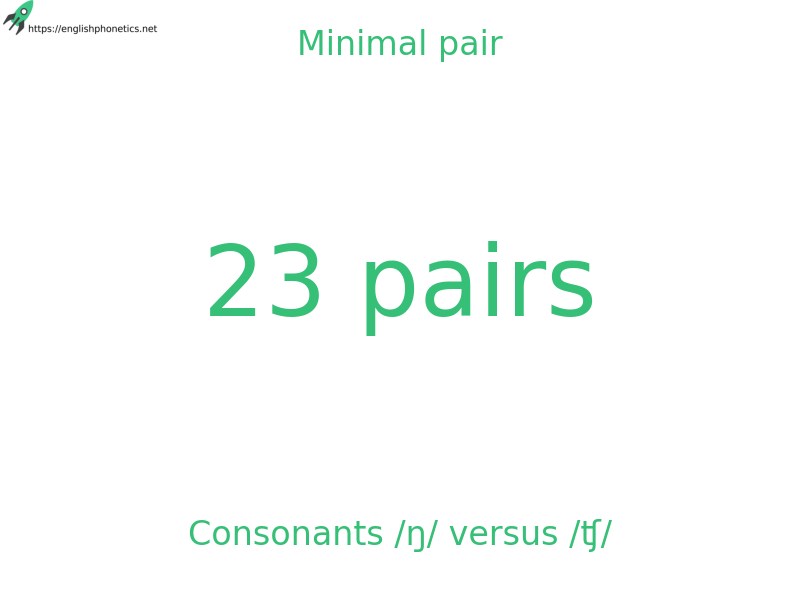Minimal Pair List Consonants /ŋ/ versus /ʧ/, 23 pairs

The /ŋ/ sound is spelled with <ng>. The /ʧ/ sound is spelled with <ch> or <tch>.
This is a contrast between a voiced velar nasal continuant and a voiceless alveolar affricate, only occurring in syllable-final position or in syllable-closing clusters. It is not a problem.
The mean density value is low at 0.4%. The lists make 18 semantic distinctions, a loading of 78%.
clung clutch
dung Dutch
hang hatch
hanging hatching
hanged hatched
hung hutch
king kitsch
pang patch
ping pitch
pinging pitching
pinged pitched
rang ratch
Reading Redditch
ring rich
ringer richer
sting stitch
stinging stitching
sung such
swing switch
swinging switching
tongue touch
wing which
wing witch
winging witching
.
Ready to improve your english accent?
Get a FREE, actionable assessment of your english accent. Start improving your clarity when speaking

John Higgins
John Higgins retired in 2000, having spent the bulk of his career as a British Council English Language Officer working in Thailand, Turkey, Egypt and Yugoslavia and the last fifteen years in lectureships at Bristol University and then running an M.Sc. programme at Stirling University. His main field was EFL, with a special interest in CALL (computer-assisted language learning) in which, together with Tim Johns of Birmingham, he was responsible for important developments in methods and materials.
His publications include A Guide to Language Laboratory Material Writing, Universitetesforlaget, 1969, Computers and Language Learning, Collins, 1984, Language Learners and Computers, Longman, 1988, and Computers in English Language Learning, Intellect Press, 1992, together with numerous papers, reviews and pieces of software. He maintains a web page on minimal pairs and homographs for teachers of English pronunciation skills.


